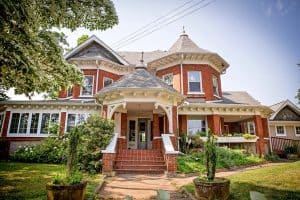
by West | May 19, 2018 | Blogs, Home Page News, Rainbow Institute
The integrated RCS curriculum fosters learning in a holistic way.
This approach is void of the restrictions often imposed by teaching discreet subjects. Purposeful integration acknowledges, builds on and reinforces the existing relationships between subject areas and/or topics. The hope is that learning is then more easily transferred into other settings.
Integration is also a “brain compatible strategy” as described by brain researcher, Eric Jenson. Jenson (1996) suggests that, “The brain learns best in real-life, immersion-style, multi-path learning [and] fragmented, piecemeal presenting can forever kill the joy and love of learning.” This immersion style is considered a best practice and is embraced by our teachers. It is, therefore, not uncommon for the theme, topic or unit of study to be woven into the fabric of an entire school day, week, and/or month. For example, the element of water and its states of matter are introduced in kindergarten. First grade elaborates on the water cycle and studies rivers and oceans. During these units, water often becomes a central theme that invites cross curricular learning.
Centering offers cross curricular learning opportunities.
The intended purpose of centering is to awaken the spiritual center of each child, opening pathways to learning. The centering practice activity includes a contemplative experience, but teachers also strive to extend the learning by integrating with the academic curriculum. The Mind Jar centering serves as an excellent example. The Mind Jar begins with a conversation about the various properties of water. Perhaps prompted by photographs of water in various forms or by a book such as, The Water Dance by Thomas Locker. Discussion yields a shared understanding of the ways in which water moves- Water is always moving, flowing, changing, essential to life, found deep in the ocean, under the ground, high in the sky, freezing, melting, etc. The focus being more heavily on the magical and mysterious qualities of the element rather than the scientific descriptions.
The teacher guides students to make connections between their own thoughts and feelings to the movements of water in the natural world
(i.e. a raging river can represent anger, a waterfall- excitement, snowfall- peace) After giving an example or two, the children are then prompted to suggest additional feelings and water movements connections. The teacher explains that The Mind Jar is simply a jar filled with water and glitter. But it is representative a tiny world where we can watch the movements of water and match those movements to our own feelings. The water represents our mind’s natural state and the glitter represents our thoughts, emotions, fears, concerns, and wonderings. When the jar is shaken, our thoughts will whirl around and our mind becomes cloudy and hard to see through. But, as the glitter begins to settle and still, so do our thoughts and feelings. It is in this stillness and calm state that we are able to make good decisions.
The Mind Jar is a simple mason jar containing water, glitter, glitter glue, and food coloring.
Combine warm water with the glitter glue, glitter, and food coloring. Close the Jar tightly. Depending on the amount of glue you use, the glitter will settle more slowly. This tool can be used when a child is feeling stressed, overwhelmed or upset. It can calm and relax them. It can serve as a meditation tool or a self-regulation tool. You can explore many versions of this on the web. If you have an interest in extending the learning from this centering, you may want to try a follow up centering using the picture book, Moody Cow Meditates. Peter the cow is moody after having a rough day. A series of unfortunate circumstances leads Peter’s grandfather to teach him how to settle his mind and let go of his frustration using some mediation tools.
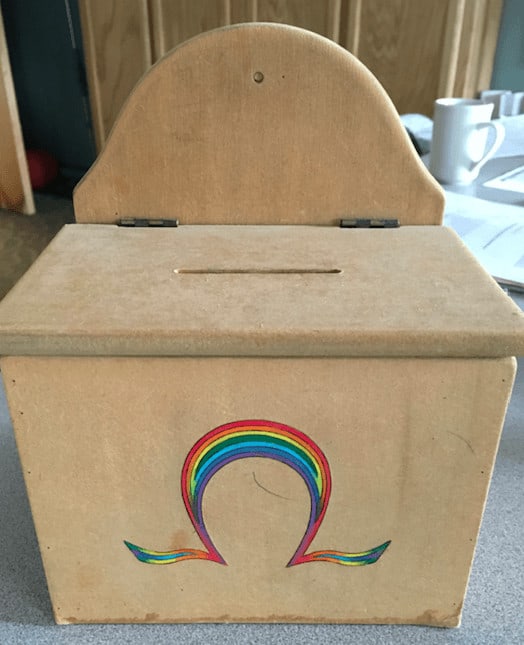
by West | May 2, 2018 | Home Page News, Rainbow Institute
Rainbow Community School had a special guest this week!
Best-selling author and Ph.D., Lisa Miller, toured our school. Lisa authored The Spiritual Child and is also the head of clinical psychology at Columbia University Teachers College. She has conducted and compiled decades of research on spiritual development in children and teens. Her research specifically quantified the effects of healthy spiritual development on mental health, resilience and thriving and provided empirical evidence that children are naturally spiritual beings. Her book also serves as a resource for parents as they navigate the important work of raising spiritual children.
Lisa is currently heading up a new project called the Collaborative for Spiritual Development. This work is aiming to develop resources for educators who wish to nurture their students’ spiritual capacities. Lisa became aware of Rainbow’s 40-year history of embracing a secular spiritual curriculum and as you learned in our Executive Director’s video, she wanted to find out more about how Rainbow is doing just that! We are hoping that her visit will yield new resources for a wide range of educators working to nurture the spiritual identities of their students.
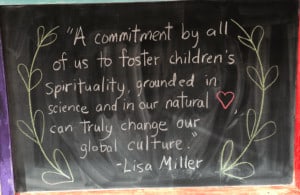
The commitment to this work is outwardly palpable among Rainbow’s staff and faculty and as a result, the spiritual curriculum is woven into the daily rhythm of each classroom.
The RCS spiritual curriculum has four primary aspects under which all its goals and objectives fall:
- Mystery and Contemplation
- Spiritual Virtues
- Ceremony and Celebration
- World Traditions.
Often, a centering practice is developed with one specific aspect in mind. Many Omega Middle School (OMS) centerings embrace theMystery and Contemplationaspect. These centerings welcome the unknown as a source of inspiration and wonder and are filled with questions, quotes or prompts that invite the students to seek deeper meaning and purpose through reflection. Just this morning, for example, Albert Einstein’s wise words were written on the whiteboard as a welcoming for each OMS student upon arrival.
“The important thing is not to stop questioning. Curiosity has its own reason for existing.”
One of the OMS classrooms has a special centering called The Philosopher’s Box. The intended purpose of this centering is to encourage this deep questioning.
To introduce this activity, ask the students what they know about the word “philosophy”, and/or if they know what the role of a philosopher is. Then share the etymology of the word “philosophy.” This word is Latin and Greek in origin and means to love knowledge: Philo=love, Sophia=knowledge. Follow by explaining that philosophy is the study of fundamental questions about the nature of existence, big ideas such as love, truth, beauty, and what it means to lead a fulfilling life.
At this point the teacher introduces the Philosopher’s Box. This is a physical box decorated with a bit of magic and whimsy or as you see fit.
Each student then writes down at least two philosophical “wonderings.” These are questions with no right or wrong answers.
Some examples for students may be:
- “Do you believe life exists on other planets?”
- “Is it important to always be 100% honest and truthful at all times (why or why not?)”
- “Do you believe it’s possible to predict the future?”
- “If you could have the abilities of one animal, which animal would you choose and why (i.e. to fly like a bird or to breath underwater like a fish)?
After giving specific examples, the students are asked to take the next few moments to reflect upon the kinds of open-ended questions they wonder about, and then place their questions in the box. From here there are many options for discussion. The teacher can pick a question at random from the box, and have students take turns answering. Or, students can pair up and discuss their answers with each other. Students and teachers can add to the box throughout the year – for example, when a good “wondering” or “what if?” question comes up during class discussion.
This centering is intended to provide a healthy and intentional space where learners can feel safe and supported as they ponder the “big questions.” Centerings like these help to bring a sense of meaning and purpose into their lives. Research suggests that having a stronger sense of purpose can make a significant difference in our lives. In fact, Lisa Miller’s research, link spiritual purpose to improved health, well-being, and a more meaningful and successful life.
Centerings like these connect our students to something greater than themselves- to something deeply spiritual.

by Cynthia Calhoun | Apr 25, 2018 | Blogs, Home Page News
Jenny Armocida – Team Highlight
There are some incredible things going on in 6th grade right now. Students are preparing to present on their businesses they created as part of our Rainbow Marketplace on April 27. Recently, 6th had Peace Awards Ceremonies, and have done other incredible things this year such as Pi Day, and a Mayan bartering marketplace, to name a few. We thought we’d take a moment to highlight Jenny Armocida for our Team Highlight this month. She’s our 6th grade teacher who will also be leading a “Staying Sharp Summer Camp” here at Rainbow. Cynthia recently sat down with her for a teacher interview.
You’re originally from Ohio. How did you end up at Rainbow?
It’s true – I’m originally from Ohio. I went to school in Sarasota, Floria but it was too hot. So I moved to Nyack, New York. But that was too cold. So I came “to the middle” to Asheville and it was just right! I had learned about this amazing school called Rainbow and I knew that wanted to teach there. In order to teach there, I had to move to Asheville. So yes, I moved here specifically to teach at Rainbow!
What made you decide to become a teacher? How long have you been a teacher?
I have been a teacher for nearly 12 years, specifically as a classroom teacher. I chose it as a profession because my favorite things are learning, asking questions, being curious, exploring the world around me, and I also like being with young people. They’re also really curious and creative. The best job I could have that would allow me to do all these things was to be a teacher. An added bonus is that you get to learn right alongside your students.

What’s the hardest part of your job? The easiest?
The hardest part of my job is knowing that you’re never really finished with it. So if I’m at my house or on vacation, I’m always thinking about my job: ideas for lessons, new things to try, that sort of thing. That can be really fun, but sometimes it’s challenging to take a break from my “teacher self.”
The easiest part is, well, what’s most enjoyable, is definitely the relationships I develop with my students. I get to know them and enjoy being with them. I get to try so many new things.
You recently had Brother Wolf come to your classroom, as well as held a Peace Awards Day. In addition, students will be tackling their small business enterprises that are also socially beneficial. Where do you get all your creative ideas for lessons and units?
I think that I am really inspired by working with all my colleagues who are so innovative and inventive. I see them pursuing their interests, sharing the best of themselves, their ideas, and passions. That compels me to look inside myself to see what’s important. Then I think about how I’d like to share all that with my students. I also enjoy doing whatever small things I can to make the world a better place. The result is that I naturally incorporate those ideas into the curriculum.
You were also recognized in 2015 with the Leavey Award for leadership in entrepreneurship education. Can you tell us more about that?
The award came from the Leavey Foundation. They recognize teachers who develop entrepreneurship curricula. I shared with them the small business projects my Rainbow students created. I also let them know that our students present their businesses at the Rainbow Marketplace. The requirement is that these businesses are also socially beneficial. The Leavey Foundation liked that because I found out I had won their award.
As an award recipient, I got a chance to go to New Orleans where they held a social studies conference. I learned about other people who were teaching entrepreneurship programs. However, I was the only middle school teacher there – the rest were high school teachers. I was happy that I could share that it’s not just something that older kids can do. Middle school students can create businesses, too.
What is your favorite subject to teach?
That is hard! We’re fortunate here at Rainbow that we have integrated lessons that incorporate so many subjects – so it’s varied. But, my personal passion is literature. I’m a big reader – I love fiction and I like to write for fun. I also really love doing the entrepreneurship projects. I enjoy history and one of my favorite lessons is when we turn the classroom into a “middle ages feudal system.” There are so many things that I enjoy teaching. I can’t pick, so I’d have to say them I enjoy them all!
What book are you reading? (Or, what is your favorite book?)
I just got back from Cuba (over spring break). Because of that, I’ve been reading a lot of Cuban writers lately. Right now, I’m reading Dreaming in Cuban by Cristina Garcia. The other awesome book I’ve read lately is called, Sisters Brothers by Patrick DeWitt. It was really compelling and a humorous read.
What is something that you’re interested in that most people don’t know?
I had a month where I was briefly interested in “tiny cooking.” That has since passed. But really, I love needlefelting. This is an art form where you use a “wad of wool” and a needle. You basically sculpt the wood and make forms out of it. I’ve made birds, tiny people, tiny hamburgers – they’re all very small. I love to make little creatures on a tiny scale. I once made a terrarium with tiny needlefelted animals inside and gave it away as a gift.
What’s the farthest you’ve traveled from home?
I would have to say that one of the farthest placed I’ve traveled was when I went to Iceland. I also went to Germany another time. Iceland, however, convinced me that I should only do beach vacations, though.
What is something that everyone should do at least once in their lives?
People should spend the day with a group of sixth graders. You will learn many interesting things and ponder questions you never thought of before. You will also laugh A LOT.
What are two items on your bucket list?
I’ve never done karaoke. Someday I’d like to try that. I’d also entertain the idea of owning a pet goat – just for the pure joy of it. I’d like a pygmy goat specifically.
If you could talk to any person, living or deceased, for half an hour, who would it be?
I would talk to the Dalai Lama. I feel like he’s very wise and seems to have a joyful sense of humor. I think it would be fun and enlightening.
What advice would you give to your 6th grade self?
I would definitely tell myself just to be authentic and true to who I am. I’d also say to follow my interests and passions and not to worry so much about what other people think.
Well there you have it, friends. A great interview with Jenny. We’re thankful she took the time to have this interview and share with our Rainbow family!

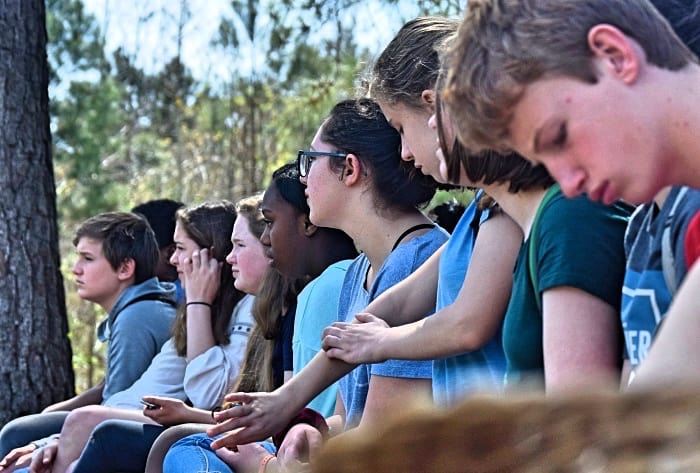
by Renee Owen | Mar 29, 2018 | Alumni News & Accolades, Director's Blog, Home Page News
Academic Achievement of Rainbow Learners: Alumni Performance After Rainbow
We wanted to track our alumni performance after Rainbow and share just how well our students perform.
Finding data that accurately reflects how our holistic learners perform academically is complex.
Standardized tests certainly don’t reflect our curriculum or our beliefs about developmentally
appropriate education. Our curriculum emphasizes critical thinking and innovation.
In looking at facts and figures in math, Rainbow students score highest on quantitative reasoning and sometimes lower in rote computation. Language arts and reading scores commonly reflect slightly lower numbers on mechanics (spelling, punctuation, etc.), but high on reasoning, analysis, and organizing ideas.
Our Students Are Prepared to Lead
As we move into the age of artificial intelligence, our graduating students are prepared to be leaders. They know how to truly think, design, plan, and act. For a child who progresses sequentially through the grade levels at Rainbow, the early years allow ample time to explore, think, and learn content – especially science and social studies. Students explore their world, ponder it, organize, and eventually learn how to re-create it, with unique ideas.
In later years, students learn mechanics and perfect their computational skills. This allows them to learn those skills quickly and easily. This frees up time in the younger years so that they have every opportunity to “light up all areas of the brain.” They don’t have to overly drill on these few, narrow skills. By the end of 8th grade, our students are ready for high school and beyond. They often test out of introductory courses into more advanced levels of Math, English language and reading, as well as more advanced world language classes.
How Do Rainbow Graduates Do In High School?
One of the most common questions parents ask during the admissions process is “How well do Rainbow graduates perform in high school?” While the majority of our graduates attend SILSA – an all honors science inquiry-based program at Asheville High – RCS students attend a variety of schools.
The Data
Recently we asked SILSA and Asheville High to disaggregate the GPA data of Rainbow students attending high school there. They analyzed all 29 RCS graduates, from freshmen to seniors, and compared their GPA averages with the rest of the SILSA student population overall:
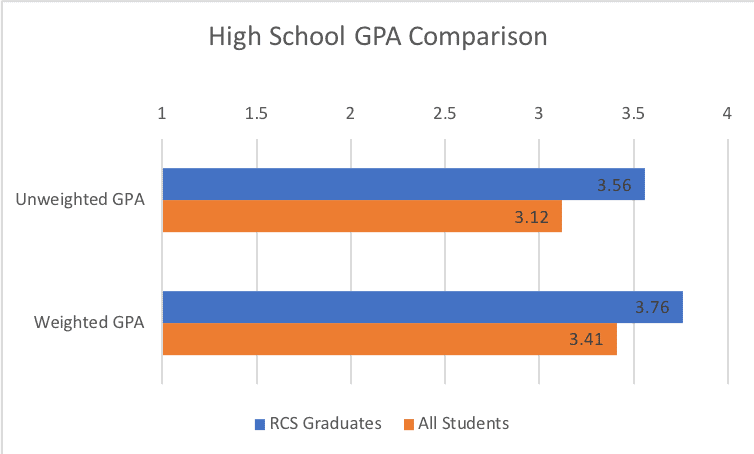
We’re grateful to SILSA for compiling this data for us! SILSA often compliments us on our Rainbow graduates. We get news of the many awards they win, and this numerical GPA data is very helpful in helping us track how well our students are doing.
The second most common school our graduates attend is Carolina Day School. We will be sure to collect a list of the many awards they will be garnering at the end of this year. Last year, a Rainbow graduate won the Faculty Prize at the Carolina Day graduation. This is a terrific honor. This prize is prestigious: all the faculty vote for a student based on character, academics, and service.
We are so very proud to send Rainbow students into the world who are accomplished, confident, and creative learners. They are prepared to be compassionate leaders in a changing world. They think out of the box and are poised to innovate.
In fact, our current 4th grade teacher, Susie, shared a funny story recently. In her first year at Rainbow, she was administering a standardized test to her students. She knew she was at a different kind of school when her students started coming up to her saying, “We don’t like any of these answers. Can we just write them in?” This is not unusual for an RCS student, and it’s what sets Rainbow Community School apart.

by West | Mar 22, 2018 | Blogs, Home Page News, Rainbow Institute
An altar is commonly associated with a religious purpose. It is often a structure or space, considered sacred, on which offerings are placed and used in a rite or ritual. However, we often create altars to honor various things that aren’t necessarily associated with a religious purpose.
We make altars all the time, some intentionally, some unintentionally and others out of habit. Consider how you may arrange your collectibles, how you may display your family photos or art, or how you may plan your garden. Think about the forts or fairy homes that your kids make in the backyard or how they arrange their special artifacts or favorite toys. With these “altars” we aim to elevate, focus energy and/or bring special attention to something.
Altar creation can be a very powerful process. It provides a space to slow down and reconnect to something very personal or meaningful to you. Creating a spiritual altar can also be a physical and visible representation of an intention you may have. It may also serve as a sacred way to invite spiritual energies and questions into your life . Ultimately, altars become focal points or reminders of our inner spirit and our connection to the divine.
Altars are very much a part of the culture of Rainbow
They are found in every classroom, used each day in centering practices and are often created by the students. The elements used in each altar vary but are often reflective of the season, the theme that the class may be studying, or the message the centering practice intends to convey. Below are some classroom altars.
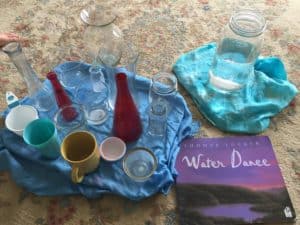
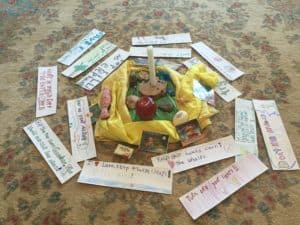
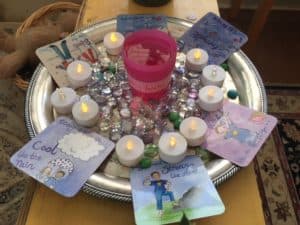
Co-creating altars
In an effort to raise money for their end of year trip, some of our students recently designed, created and sold traveling altars. Each altar provides various resources and tools that may help others to bring a centering practice into the home.
- The tablecloth serves a way to transport the altar as well as an aesthetically pleasing foundation to set up the altar.
- The candle, when lit, sets the tone for the practice and invites spirit into the room. It is also a visible reminder to celebrate the light in ourselves, others and the world around us.
- The shell demonstrates our connection to the natural world. Displaying nature artifacts bring forth the wonder and magic of the natural world and reminds us that time in nature can yield deep connection and contemplation.
- The painted rock displays a word of intention and reminds us to aim to bring positive emotions into our lives.
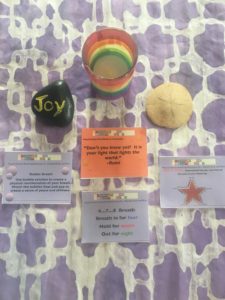
The blue cards share three different breathing techniques that help the mind and body achieve awareness, presence and peace. The orange quote card is intended to engage the reader’s mental domain by encouraging them to reflect on words of wisdom. The yellow cards highlight social conversation questions posed by the students. These cards encourage the readers to ponder big questions such as, “When and how was the universe born?” and “What happens after death?” or ask the reader to personally reflect on things like, “What type of personal do you hope/aim to be?” or What helps you to feel calm and grounded?”
How might these inform your practice?
The creators of these traveling altars were hoping that the altars would prompt centering practices within the home. The elements of each altar are simply starting points out of which family ritual, contemplative practice and spiritual development can grow.
Consider what your family or classroom altar could look like. Where might it live? What elements would you include? What question cards or breathing techniques could be added to this package? What inspirational quotes might serve your family or classroom?
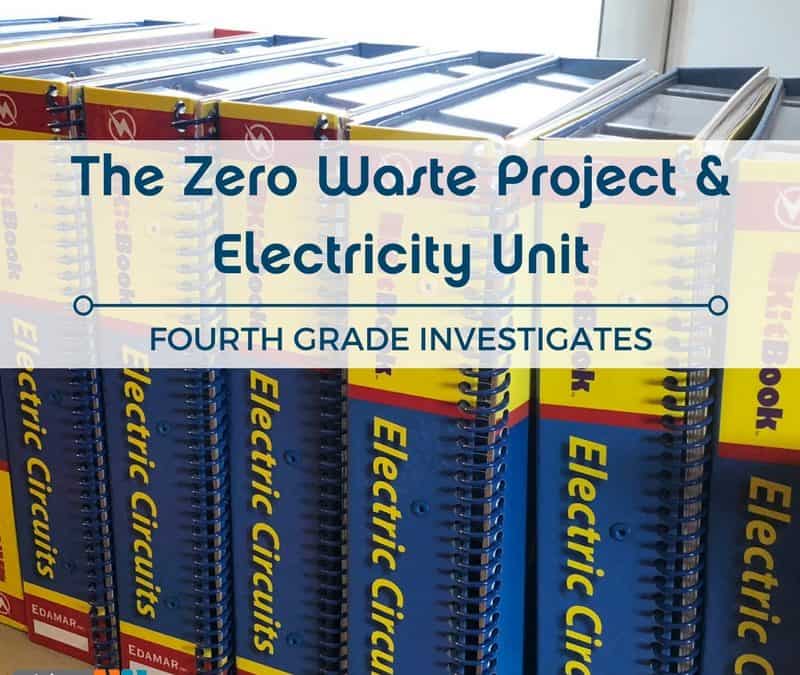
by Cynthia Calhoun | Mar 13, 2018 | Blogs, Home Page News
The Zero Waste Project
4th graders in Susie’s class embarked upon a special project recently: charting how much food, recycling, and trash that students produce as their “Zero Waste Project.” As students embarked upon this endeavor, they looked at the school’s mission statement. Students held discussions and made connections between their project and Rainbow’s mission.
Zero Waste was part of a larger unit on electricity. Students explored energy use and human impact across the domains.

At the beginning of the unit, Darrah, a Rainbow parent, came to speak about solar panels and energy use. She shared with 4th grade how solar panels have a negative charge and those negatively charged electrons run off the side of the panels to a conductor. Relatively big batteries fuel the panels and are “better than ever” at holding electricity for longer periods of time, such as when there are cloudy days.

After talking about solar panels, 4th grade moved on to talking about Zero Waste. For about two and a half weeks, students calculated in ounces how much food waste, trash, and recycling the class collectively generated each day. They recorded that data into a graph.

Day 1: The Introduction: students put food, waste and recycling into the pitchers and weighed them at the end of the day.

After 11 class days, students had the graph filled out and made some great observations.
Charting this kind of data had an assortment of learning opportunities, as you can imagine. Students learned about decimals, taring the scale, how to accurately graph data and interpret the results. They understood that certain food waste went into the pitcher, but things like banana peels and apple cores did not. Those could be composted and were things that people normally didn’t eat.
Any bits of sandwiches from lunch or leftover snacks (that students wouldn’t eat later) all went into the pitchers for measuring. For paper recycling, students were able to rip up pieces so they could fit into the pitchers. Since the school has pizza on Thursdays, they also started to brainstorm about how to use a pizza box in different ways.
Part of the idea behind this project was to allow students to just become aware and more mindful of their actions and their impact with regard to food, recycling and trash.
How It All Ties Together
In their electricity unit, students saw how the consumption of resources was related to electricity, to water, and to the planet. They saw how they could take advantage of opportunities to reduce, reuse, and recycle. They talked about the use of reusable bottles, how they might decline the plastic straw at restaurants, turn the faucet off while brushing, turn lights on only when necessary, eat all their food off dinner plates (and store the rest), and more.
An Electricity Feast
The end of this special unit was marked with an “electricity feast.” Students and their families brought in food to enjoy together, but only after 4th graders demonstrated their learning at different stations.

All around the classroom were signs of learning about electricity.
The creative and mental domains were an integral part of this unit. Students created electric game boards. If you answered a question correctly, the circuit would connect and light up (with the help of a knowledgeable 4th grader).

Closing the circuit resulted in the light bulb glowing.
Themes for morning centering during the unit allowed students to reflect on how their own light shines in the world. Students also reflected on world leaders and what light they bring to the world community.

Students reflected on the idea of personal enlightenment and leaders who changed the world with their light. This touches upon the spiritual domain.
The 4th grade classroom was “alight” with the energy of community, learning, light and love as families came to see all the students present their portfolios.

After everything was finished, everyone joined together for a blessing. There was a lot of gratitude for the feast. They understood that what we eat ultimately comes from our beautiful planet.

At least several students in 4th grade reported on how they wanted to keep trying to measure their food, recycling and trash to stay mindful of their consumption of resources. Beyond the unit, others have mentioned changing habits at home and being more mindful of their impact on the planet and on the world’s resources.































